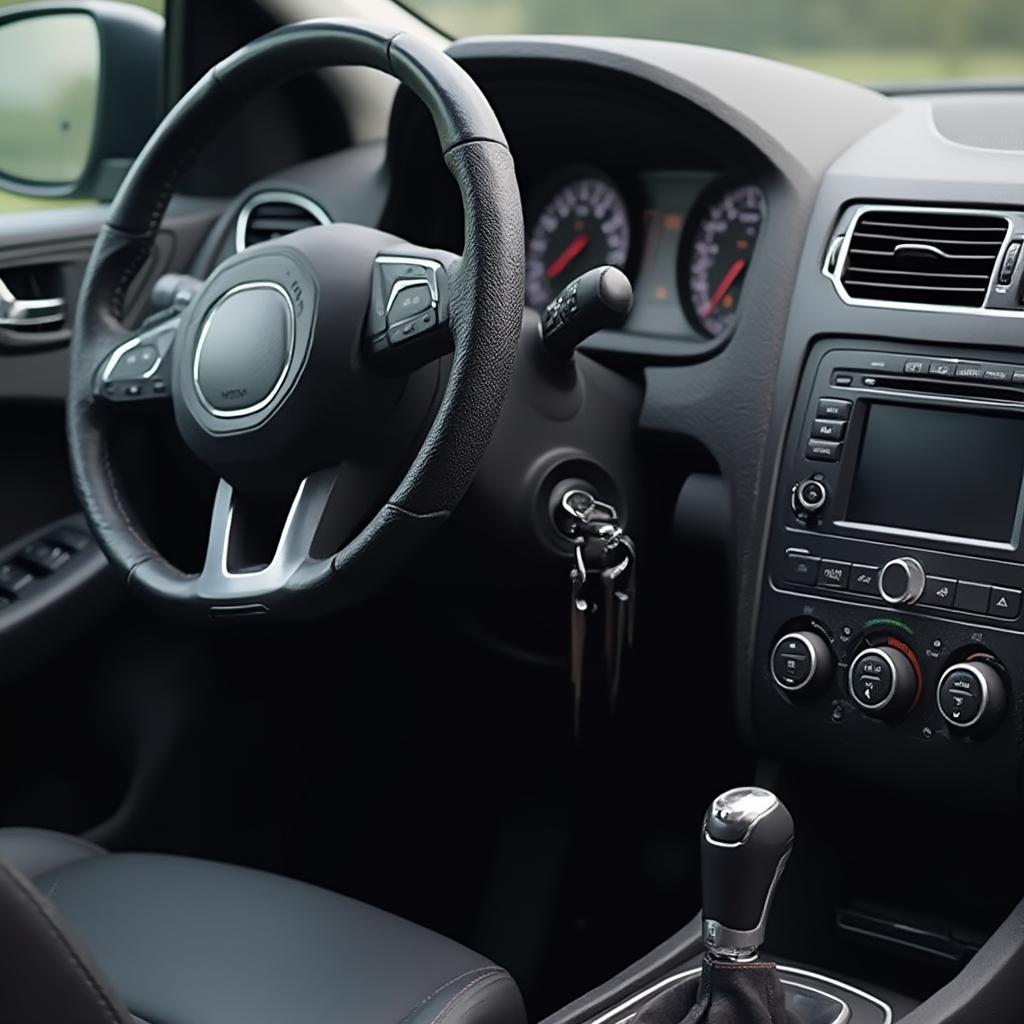European cars and OBD2 have a long and intertwined history. If you’re wondering whether your European car has an OBD2 port, this article will provide you with a comprehensive understanding of the subject. We’ll delve into the specifics of OBD2 compliance in European vehicles, exploring the regulations, timelines, and potential exceptions.
Most European cars manufactured after specific dates are indeed equipped with OBD2 ports. The European Union mandated OBD2 compliance for gasoline vehicles starting in 2001 and for diesel vehicles beginning in 2004. This standardization was a crucial step towards facilitating easier diagnostics and emissions control. However, some early adopters introduced OBD2 compatibility even earlier, with certain models as far back as the mid-1990s already featuring the now-ubiquitous 16-pin connector. This means that if your European car is from the late 90s or later, there is a high probability it is OBD2 compliant. However, there can be exceptions, especially with some early implementations or specific vehicle models. Knowing the year of manufacture of your European car is the first step in determining its OBD2 compatibility.
OBD2 in European Vehicles: A Timeline
The implementation of OBD2 in Europe followed a phased approach, with different deadlines for gasoline and diesel vehicles. This staggered rollout allowed manufacturers time to adapt to the new regulations and ensure their vehicles met the required standards.
Gasoline Vehicles
For gasoline-powered cars, OBD2 became mandatory in 2001. This meant that all new gasoline vehicles sold in the European Union from 2001 onwards had to be equipped with an OBD2 compliant system. This regulation paved the way for more standardized diagnostics across different makes and models, simplifying troubleshooting for mechanics and vehicle owners alike.
Diesel Vehicles
The mandate for OBD2 in diesel vehicles came slightly later, in 2004. Diesel engines, with their different combustion characteristics and emissions profiles, required additional time for adaptation to the OBD2 standards.
Identifying OBD2 Compliance in Your European Car
Several methods can help you determine if your European car has an OBD2 port. The most straightforward approach is to visually inspect the vehicle for the characteristic 16-pin connector. Check does my car have an obd2 port for guidance. It is typically located under the dashboard, often near the steering column or within the center console area.
Another method involves checking the vehicle’s documentation. The owner’s manual should contain information about the vehicle’s diagnostic system, including whether it is OBD2 compliant. You can also find out about OBD2 connector pin diagram to help you correctly identify the connector.
What if My European Car Isn’t OBD2 Compliant?
While less common in newer vehicles, some older European models might not have a standard OBD2 port. In such cases, these vehicles might utilize proprietary diagnostic connectors and protocols specific to the manufacturer. Diagnosing these systems often requires specialized equipment and software. For these older European cars, you may need to resort to manufacturer-specific diagnostic tools to retrieve and interpret trouble codes.
Why is OBD2 Important?
OBD2 plays a crucial role in emissions control and vehicle diagnostics. It provides a standardized interface for accessing diagnostic trouble codes (DTCs), which indicate malfunctions within the vehicle’s systems. If you’re interested in knowing more about OBD2, check our article on is0941 obd2. This standardized system enables mechanics and vehicle owners to quickly identify and address potential issues, contributing to improved vehicle maintenance and reduced emissions.
Expert Insight
“The standardization of OBD2 has revolutionized vehicle diagnostics, making it significantly easier to pinpoint and resolve issues across various makes and models,” says Dr. Andreas Mueller, Automotive Engineer at the prestigious German automotive research institute, Kraftfahrzeug-Forschungszentrum.
“OBD2 compliance in European vehicles has played a key role in improving air quality by enabling more effective emissions monitoring and control,” adds Dr. Elena Rossi, Environmental Scientist at the European Environment Agency.
Conclusion
Most European cars manufactured from 2001 (gasoline) and 2004 (diesel) onwards are equipped with OBD2 ports. This standardization facilitates easier diagnostics and emissions control. While exceptions might exist, especially for older models, understanding the timelines and regulations helps determine OBD2 compliance in your European vehicle. You can also check out this article on when were obd2 ports put in cars for a more general overview. Remember to check your vehicle documentation or physically inspect for the 16-pin connector for confirmation. See also this article on jdm obd2 pinout for related information.
FAQ
-
What does OBD2 stand for? OBD2 stands for On-Board Diagnostics, Second Generation.
-
Where is the OBD2 port located in European cars? It is typically found under the dashboard, often near the steering column or in the center console.
-
Are all European cars OBD2 compliant? Most European cars made after 2001 (gasoline) and 2004 (diesel) are OBD2 compliant.
-
What if I can’t find the OBD2 port? Check your owner’s manual or consult a mechanic.
-
Why is my OBD2 scanner not working? Ensure compatibility with your vehicle and that the ignition is on.
-
Can I use any OBD2 scanner on a European car? Most generic OBD2 scanners will work, but some manufacturer-specific functionalities might require specialized tools.
-
What can I do with an OBD2 scanner? You can read and clear diagnostic trouble codes, monitor real-time data, and perform various diagnostic tests.
For any further assistance, please don’t hesitate to contact us via WhatsApp: +1(641)206-8880, Email: [email protected] or visit us at 789 Elm Street, San Francisco, CA 94102, USA. Our customer service team is available 24/7.


